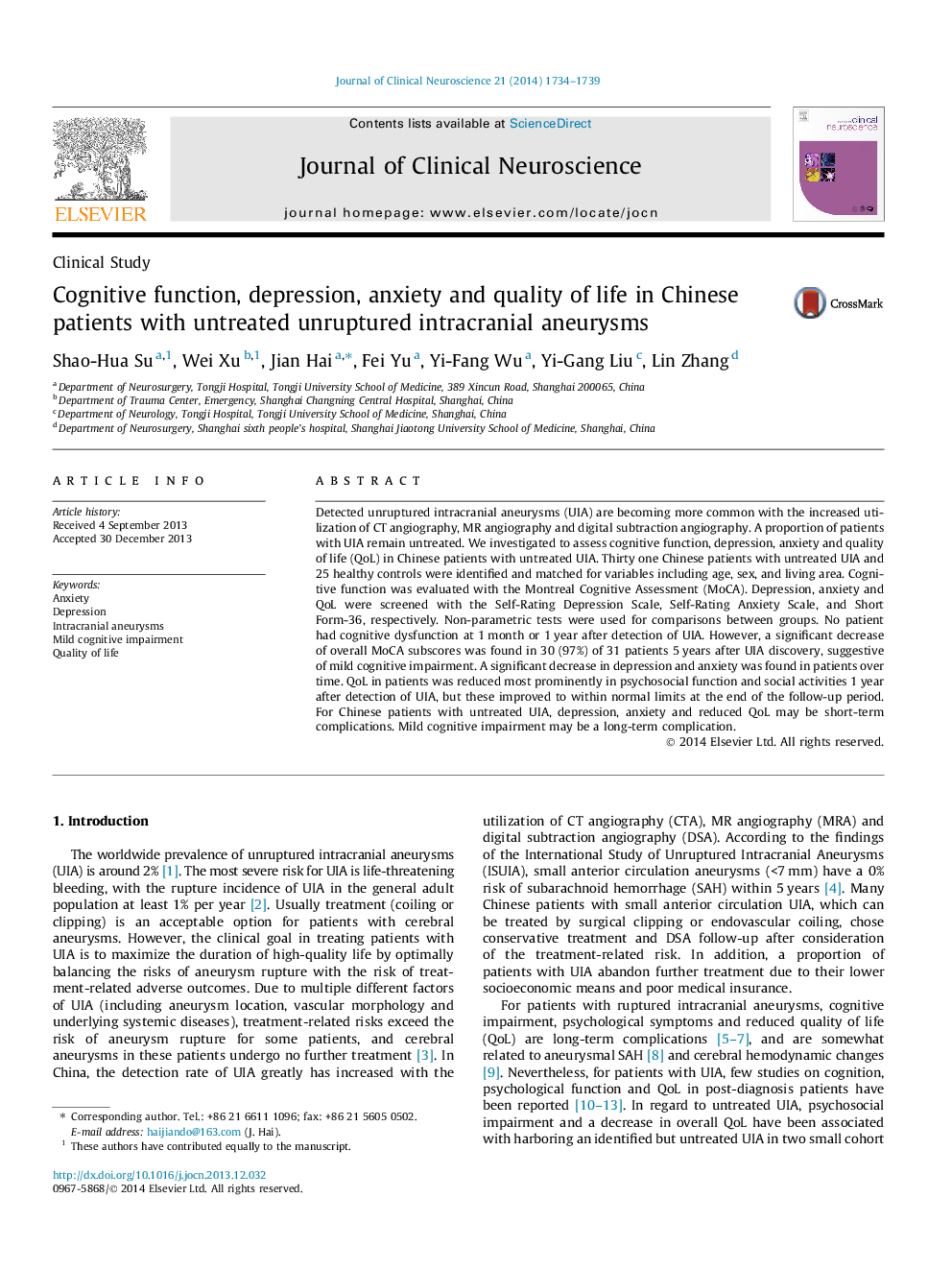| Article ID | Journal | Published Year | Pages | File Type |
|---|---|---|---|---|
| 3059341 | Journal of Clinical Neuroscience | 2014 | 6 Pages |
Detected unruptured intracranial aneurysms (UIA) are becoming more common with the increased utilization of CT angiography, MR angiography and digital subtraction angiography. A proportion of patients with UIA remain untreated. We investigated to assess cognitive function, depression, anxiety and quality of life (QoL) in Chinese patients with untreated UIA. Thirty one Chinese patients with untreated UIA and 25 healthy controls were identified and matched for variables including age, sex, and living area. Cognitive function was evaluated with the Montreal Cognitive Assessment (MoCA). Depression, anxiety and QoL were screened with the Self-Rating Depression Scale, Self-Rating Anxiety Scale, and Short Form-36, respectively. Non-parametric tests were used for comparisons between groups. No patient had cognitive dysfunction at 1 month or 1 year after detection of UIA. However, a significant decrease of overall MoCA subscores was found in 30 (97%) of 31 patients 5 years after UIA discovery, suggestive of mild cognitive impairment. A significant decrease in depression and anxiety was found in patients over time. QoL in patients was reduced most prominently in psychosocial function and social activities 1 year after detection of UIA, but these improved to within normal limits at the end of the follow-up period. For Chinese patients with untreated UIA, depression, anxiety and reduced QoL may be short-term complications. Mild cognitive impairment may be a long-term complication.
